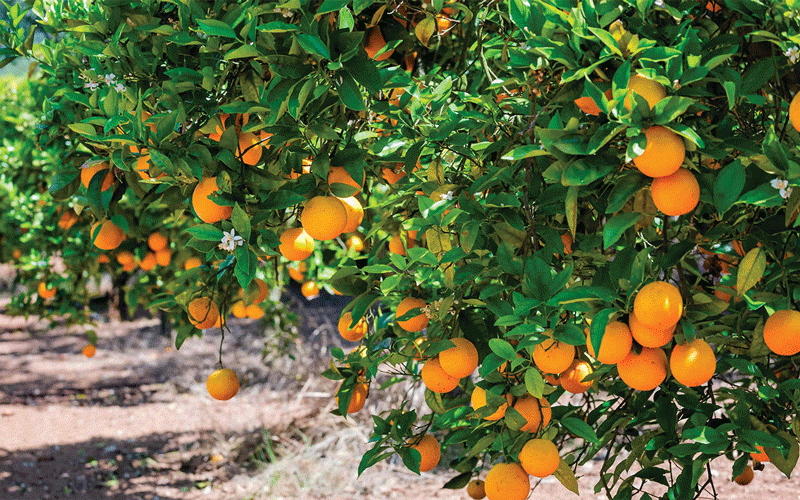
THE engagement and re-engagement agenda, championed by President Emmerson Mnangagwa has placed Zimbabwe at the heart of global supply chains.
The successes of the agenda have seen an increased appetite by leading economies to do business with Zimbabwe and use it as a gateway to all countries in the sub-region, and other parts of the African continent.
For example, the recently held Zimbabwe-China Business Forum showed a huge interest from the Chinese private sector to do business with local enterprises in areas of tourism, investment and trade.
The forum, organised by ZimTrade with support from the Zimbabwe Investment and Development Agency, and Zimbabwe Tourism Authority also gave local businesses an insight into some of the key export opportunities in China, and some of the requirements that will make it easy to land products on the Asian market.
Of the many areas of export potential, the horticultural sector came out as a low-hanging fruit that can provide local businesses with an easy access to the market.
This is because Zimbabwe is growing some of the crops that are performing well on the market and are fetching premium prices.
A quick market scan conducted by ZimTrade on the sidelines of the forum revealed opportunities for local farmers to earn premium value on a wide range of crops.
Top-end retail markets and convenient stores in China import some of the fresh produce, and these are sold for a premium price in most cases.
- Zimbabwe’s trade deficit narrows to US$179m
- Malawi warms up to Zim products
- ZimTrade targets African markets
- ZimTrade targets African markets.
Keep Reading
For example, a 250-gramme packet of blueberries or middle-sized watermelons can cost 68 yuan (around US$9,60), while four large-size oranges can cost around 58 yuan/kg (around US$8,15) in some stores.
A punnet of three avocados (hass variety) can fetch around 55 yuan (US$7,7), 150 grammes of fresh peas at 8,90 yuan (US$1,25), 300 grammes of fresh okra at 9,90 yuan (US$1,4), and 400 grammes of fresh peanuts at 8 yuan (US$1,12 dollars).
Data also show that 650 grammes of neatly packaged sweet potato can cost around 19 yuan (US$2,67, 100 grammes of fresh chillies at 12,80 yuan (US$1,80), two large-size green pepper at 13,60 yuan (US$1,91).
While having a top-quality produce in large quantities to sustain supply is important, how the product is presented will also determine the success of products as China is big on packaging.
Consumers in China, just like in most markets around the world, are now looking for convenience in products that are packaged and are easy to carry, prepare and eat.
Local farmers need to improve on packaging when entering the Chinese market, with a focus on packaging that enhances the ease of use, both at home and on the go.
Where packaging can be conveniently sourced in China, local producers need to work with reliable local distributors who can assist in meeting packaging expectations and requirements.
The market for horticultural produce has almost doubled in the past five years, from US$11,5 billion in 2018 to US$21,6 billion in 2022, according to Trade Map.
The fact that import figures of horticultural produce in China are in double digits alone shows huge potential for the market to contribute immensely towards Zimbabwe’s export growth.
Top imported horticultural produce in China last year were berries (US$6,1 billion), stone fruits (US$3,14 billion), roots and tubers (US$2,04 billion), nuts (US$1,81 billion), legumes (US$1,75 billion), bananas (US$1,16 billion), and dates, figs, pineapples, avocados, guavas, mangoes and mangosteens (US$987 million).
Other top imported produce last year were coconuts, Brazil nuts and cashew nuts; tea and coffee; grapes; citrus fruits; apples, pears and quinces; flowers; other vegetables and dried fruits.
Zimbabwe has potential to supply most of these products as they are already in production and some local producers are already exporting to markets such as the Netherlands, the United Kingdom and United Arab Emirates.
While the Chinese market offers premium prices for fresh produce, there are requirements that must be facilitated by governments that will make it easy for local producers to export.
For example, the approved citrus protocol is a major step that is expected to boost Zimbabwe’s exports of oranges, lemons and other citrus fruits to the market.
What is also important is for local farmers to meet the requirements of the protocol and maximise on its benefits so that it becomes easy for authorities to lobby for additional protocols.
There is need for more protocols focusing on other produce that Zimbabwean farmers have capacity to produce.
Further to this, there is also a need for supporting infrastructure, such as coldroom facilities that will make it easy for producers across the country to export fresh produce to China.
For bulky products such as potatoes and sweet potatoes, sea freight is the most sustainable option, with the port of Beira, Mozambique identified as the most convenient route for those looking to export.
Deliberate investments into more storage and handling facilities along corridors that connect Zimbabwe to closer ports should be considered, to make it possible for exporters and freighters to handle huge volumes of fresh produce exports.







